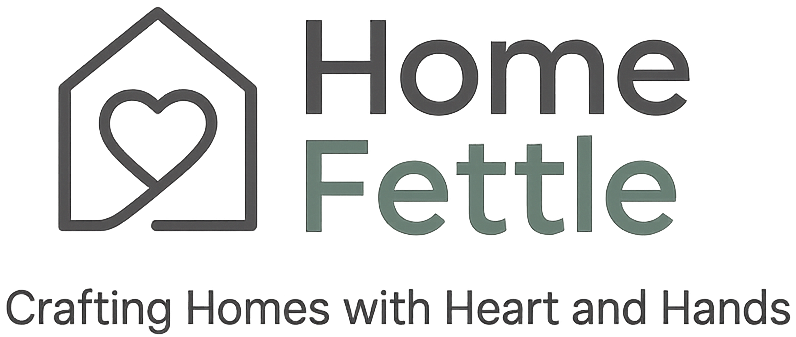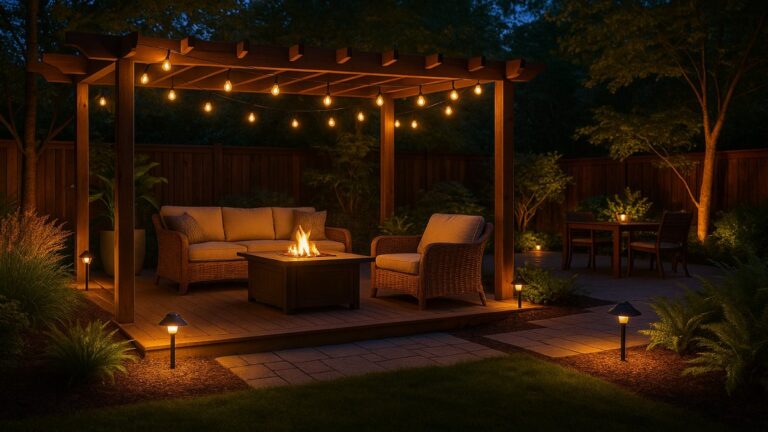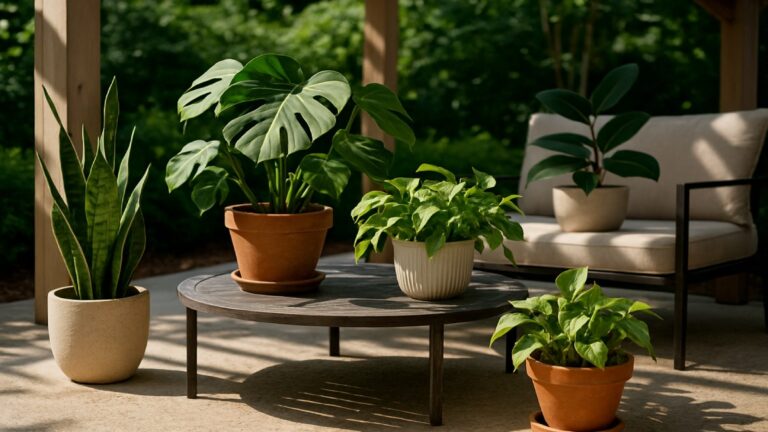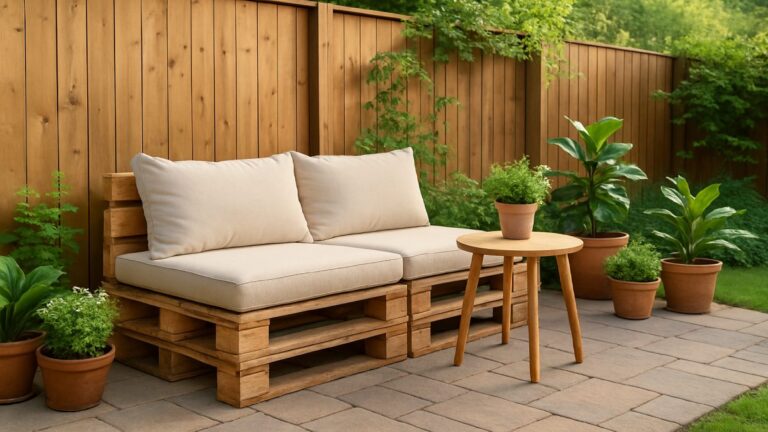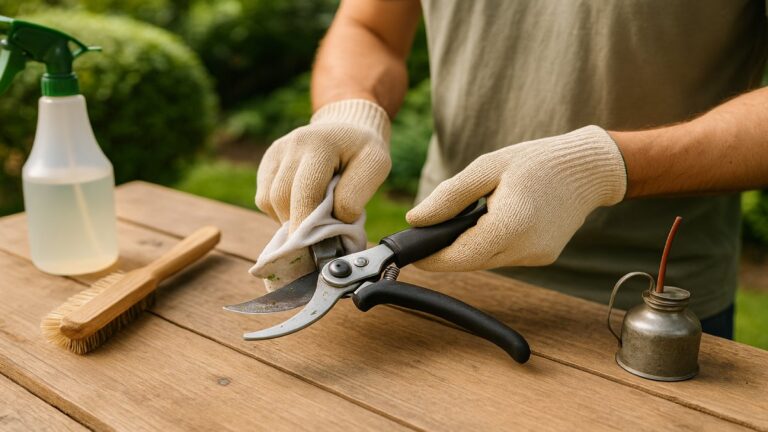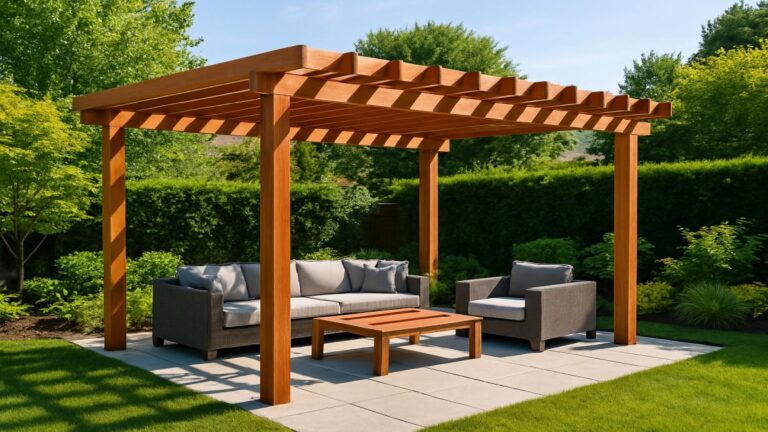Best Backyard Fence Ideas for Privacy and Security
Your backyard deserves more than a basic boundary. The right fence can create a private retreat, quiet traffic noise, guide views, and add a confident layer of security—all while elevating curb appeal. This guide explores the smartest fence ideas for modern homes, with clear advice on materials, design details, costs, installation, maintenance, and safety upgrades that actually work.
Think of your fence as a long-term investment that shapes how you live outdoors. From sleek horizontal slats to lush living screens and integrated lighting, you’ll find options for tight urban lots and sprawling suburban yards alike. Use the strategies below to match privacy needs, architectural style, and budget without sacrificing durability or aesthetics.

Start With a Clear Plan
Before choosing material or color, define what “privacy” and “security” actually mean for your property. Do you need full visual screening from a neighboring deck, or just a soft backdrop that frames plantings? Is the main concern a pool safety perimeter, a pet-friendly yard, or a stronger barrier at a rear alley?
- Map sightlines: Stand in key outdoor seating spots and note what you want to block or frame. Mark view corridors you want to preserve.
- Identify vulnerability points: Side yards, rear lanes, and low spots near gates are typical trouble zones.
- Set height targets: Most privacy fences fall between 6–8 ft, subject to local code limits and HOA rules.
- Plan transitions: Blend heights and materials gracefully at corners, driveways, and between front and back yards.
Know the Rules: Codes, HOAs, and Boundaries
Confirm property lines and utility easements before digging. Municipal codes usually restrict height near streets and corners, and many HOAs specify approved materials, colors, and styles. When in doubt, request a simple site plan or survey, and call to mark underground utilities. A short pre-build checklist avoids costly rework.
Material Options: Look, Longevity, and Upkeep
Every material tells a design story and carries a different maintenance profile. Here’s how the top choices compare for privacy and security.
Wood: Warm, Versatile, and Customizable
Wood remains a favorite for natural warmth and design flexibility—from vertical board-on-board to modern horizontal slats. Cedar and redwood resist decay better than basic pine, while pressure-treated posts extend life at ground contact. Expect periodic sealing or staining.
- Privacy styles: Board-on-board, shadowbox, louvered, and full-panel designs.
- Security upgrades: Steel post sleeves, through-bolted hinges, and mid-rails reduce sagging and prying.
- Maintenance: Refinish every 2–4 years depending on sun exposure and climate.
Vinyl: Low Maintenance With Clean Lines
Vinyl (PVC) fences deliver consistent color, easy cleaning, and strong privacy panels that won’t rot. Look for thicker-wall profiles, reinforced rails, and UV inhibitors to minimize chalking. Privacy tops can be styled with decorative lattices for added light and airflow.
Composite: Wood Look, Minimal Upkeep
Composite planks and panels blend wood fibers with polymers for a refined texture that resists warping, cracking, and insect damage. They often come in rich, fade-resistant tones and pair beautifully with metal posts for a high-design look.
Metal: Strong, Airy, and Secure
Aluminum and steel deliver long spans with minimal bulk—perfect when you want security without a closed-in feel. Powder-coated finishes resist corrosion, and narrow picket spacing boosts deterrence. For privacy, add integrated screens, slats, or planted hedges behind the fence line.
Living Screens and Hybrids
Hedges, bamboo, and trellised vines soften hard lines and reduce sound. Hybrid systems combine a durable metal frame with wood or composite infill, balancing structural strength with warm texture. Planting beds at the fence base enhance depth and reduce maintenance by limiting mower scuffs.

Designs That Deliver True Privacy
Privacy is about more than height—it’s the way boards overlap, louver, or step with the grade. Good design manages views and light while maintaining airflow and visual rhythm.
Board-on-Board
Alternating boards on each side of the rail leave no direct gaps, even as wood expands and contracts. It’s a premium privacy approach that reads solid yet refined.
Shadowbox (Good Neighbor)
Boards alternate on each side of the rails with subtle spacing, giving both neighbors a finished face. It breathes better in windy regions and avoids a monolithic look.
Horizontal Slat
Wide horizontal planks or slats feel contemporary and lengthen the yard visually. Use consistent reveals and hidden fasteners for a tailored finish.
Louvered and Screened
Louvered slats tip downward to block views while allowing airflow—useful for patios and pool areas. At night, integrated backlighting turns louvers into sculptural features.
Security Features That Actually Work
Privacy stops prying eyes; security discourages intrusions. The strongest systems combine gate design, hardware selection, and lighting in a cohesive plan.
- Gate placement and type: Keep gates visible from the house; use heavier frames and steel posts. Double-drive gates need robust center latches and ground stops.
- Latch and lock quality: Through-bolted hinges, tamper-resistant fasteners, and keyed or keypad latches raise the barrier to entry.
- Climb resistance: Avoid horizontal rails on the outside; use flush caps or angled top rails. Narrow picket spacing reduces footholds.
- Lighting and cameras: Aim warm, glare-free light at gate areas; integrate conduit for discreet wiring.
- Clear zones: Keep shrubs trimmed near gates and corners so lines of sight remain open from the house.

Height, Setbacks, and Sightlines
In most neighborhoods, rear-yard fences up to 6 ft are common; side-yard and street-facing sections often have stricter limits. If you need extra screening, consider terraced planting beds, pergola wings, or taller trellises behind a compliant fence line. Layering height legally can be more effective than a single tall wall.
Sound, Wind, and Microclimates
Solid fences block direct sound paths but can reflect noise back into the yard. Shadowbox and louvered patterns break up reflections while maintaining privacy. In windy zones, leave controlled gaps or choose diagonal bracing to minimize sail effect and post stress. Darker colors absorb more heat; lighter tones and ventilated designs help cool seating areas.
Cost Ranges and Budget Strategies
Budgets vary by region, height, slope, and gate count, but these ranges help frame decisions (materials only; installation adds labor):
- Wood privacy: $$ — excellent value; higher maintenance long-term.
- Vinyl privacy: $$–$$$ — low upkeep; consistent color and finish.
- Composite with metal posts: $$$ — premium look; minimal maintenance.
- Aluminum/steel picket: $$–$$$ — secure and durable; add screens for privacy.
- Hybrid (metal frame + wood/composite infill): $$$ — long-span strength with warm texture.
Stretch your budget with a phased plan: prioritize the most visible or vulnerable sides first, then complete remaining runs later with the same spec.
Installation: DIY or Pro?
DIY saves money but requires accurate layout, post setting, and square, plumb panels. Pros bring better tools, faster timelines, and deep code knowledge, which pays off on sloped or rocky sites and complex gates. If installing yourself, set posts in concrete below frost depth, crown the concrete for drainage, and allow for expansion gaps in wood or composite systems.
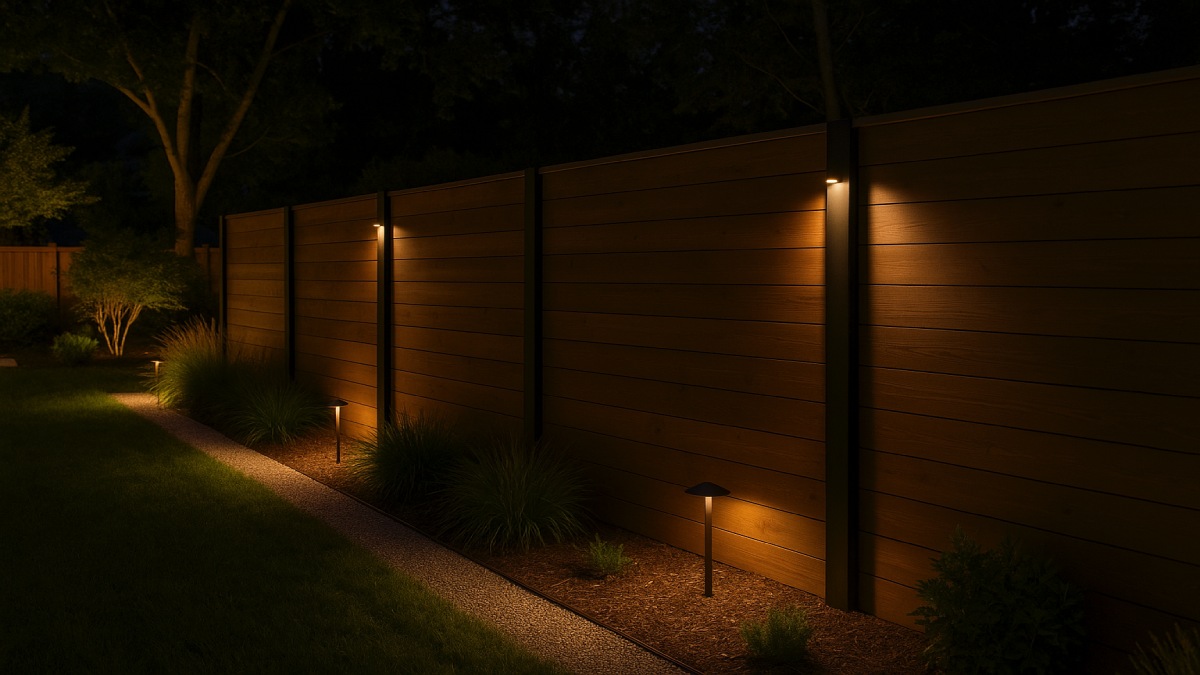
Maintenance and Longevity
Whatever material you select, a few habits dramatically extend fence life and preserve a luxe finish.
- Annual wash: Rinse grit and mildew with a gentle setting and soft brush.
- Fastener check: Tighten hardware and inspect hinges, latches, and mid-rails each season.
- Finish care: Re-stain or seal wood on a predictable schedule; spot-treat high UV faces.
- Soil and mulch clearance: Keep grade and mulch away from boards to prevent wicking and rot.
- Irrigation control: Aim sprinklers below rails and away from post bases.
Color, Texture, and Style Direction
Fence color should support—not overpower—your architecture. Match trims for a cohesive envelope, or create an intentional contrast that frames plantings. Vertical patterns lift lines on low ranch homes; horizontal slats complement modern facades. Matte sheens read upscale outdoors and hide dust better than high-gloss finishes.
Planting the Perimeter
Evergreen shrubs, ornamental grasses, and flowering layers add softness and seasonal interest. Plant in staggered drifts to break up long fence runs. At narrow side yards, train vines on tensioned cables or welded-wire panels mounted a few inches off the fence—air space protects the finish and speeds drying after rain.
Pet and Pool Considerations
For pets, prioritize dig protection with buried kickboards or L-shaped wire barriers inside the fence line. For pools, verify self-closing, self-latching gate hardware and required heights or spacings in your jurisdiction. Mesh or acrylic privacy panels near the pool preserve wind flow while screening lounge zones from neighboring windows.
Regional and Climate Notes
- Coastal: Salt air demands powder-coated metals, stainless fasteners, and sealed wood species.
- Snow and freeze: Deeper footings, helical piles, or larger post diameters resist frost heave; choose gaps that shed drifts.
- High sun/desert: UV-stable finishes and heat-tolerant colors maintain appearance; plan taller plantings for shade pockets.
- Humid zones: Ventilated designs and fungicidal finishes limit mildew and swelling.
Smart Upgrades for Daily Ease
Small additions make a big impact on usability and peace of mind.
- Keypad or smart deadbolts: Hands-free access for family and service pros.
- Soft-close gate hardware: Prevents slams and latch damage in windy spots.
- Integrated mailbox or parcel slot: Ideal on side-yard runs that face the street.
- Conduit runs: Future-proofs for cameras or lighting without exposed wiring.
Common Mistakes to Avoid
- Ignoring slope: Level panels on a steep grade create awkward gaps. Step panels or follow the contour.
- Undersized posts: Taller fences need thicker posts and deeper footings.
- Too many horizontal rails outside: They become ladders. Place climbable elements on the yard side.
- Mixed finishes: Inconsistent stains and sheens look patchy. Specify a single finish schedule.
- Skipping a gate plan: A beautiful fence with a flimsy gate fails fast—engineer the opening first.
FAQs
What fence height provides real privacy?
Most backyards feel secluded at 6 ft. If you need more, use layered planting, trellises, or a pergola extension to maintain code compliance while boosting screening.
Which material is lowest maintenance?
Vinyl and composite require the least ongoing care. Aluminum and steel are also low-maintenance; rinse occasionally and check hardware.
How do I make a modern fence more secure?
Reinforce posts, use through-bolted hinges, upgrade to a keyed latch, keep rails on the inside, and add low-glare lighting at gates and corners.
Can I mix materials?
Yes. Metal posts with wood or composite infill offer strength, style, and simpler long spans—especially useful for wide gates or windy sites.
A Quick Specification Checklist
- Verified property lines and utility locations
- Fence height by segment, with transitions at corners
- Post size, depth, and footing details
- Panel type (board-on-board, shadowbox, horizontal, louver)
- Gate count, width, hardware, and lock type
- Finish color, sheen, and maintenance schedule
- Lighting, conduit, and camera provisions
- Planting plan along fence runs
Conclusion: Privacy, Security, and Style in One Line
The best backyard fences solve multiple needs at once. They screen views without feeling heavy, reinforce boundaries without looking harsh, and tie your landscape together with confident design lines. Prioritize a material that fits your climate and care routine, engineer the gate like a front door, and add thoughtful lighting so the fence reads like architecture—day and night.
With a clear plan and the right details, your fence will do more than mark an edge. It will become the backdrop for everyday living outdoors—quiet, secure, and beautifully composed.
